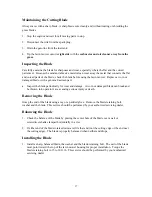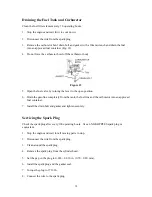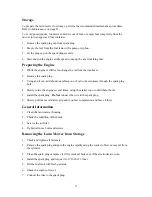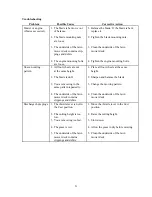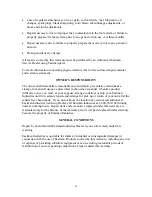
17
Maintaining the Cutting Blade
Always mow with a sharp blade. A sharp blade cuts cleanly and without tearing or shredding the
grass blades.
1.
Stop the engine and wait for all moving parts to stop.
2.
Disconnect the wire from the spark plug.
3.
Drain the gasoline from the fuel tank.
4.
Tip the lawn mower onto its
right side
with the
carburetor and air cleaner away from the
grass
.
Inspecting the Blade
Carefully examine the blade for sharpness and wear, especially where the flat and the curved
parts meet. Because the sand and abrasive material can wear away the metal that connects the flat
and curved parts of the blade, check the blade before using the lawn mower. Replace a worn or
damaged blade, with a genuine Eastman part.
•
Inspect the blade periodically for wear and damage. A worn or damaged blade can break and
be thrown into operator’s area causing serious injury or death.
Removing the Blade
Grasp the end of the blade using a rag or a padded glove. Remove the blade retaining bolt,
washer and the blade. This service should be performed by your authorized servicing dealer.
Balancing the Blade
1.
Check the balance of the blade by placing the center hole of the blade over a nail or
screwdriver shank clamped horizontally in a vise.
2.
If either end of the blade rotates downward, file that end (not the cutting edge or the end near
the cutting edge). The blade is properly balanced when neither end drops.
Installing the Blade
1.
Install a sharp, balanced blade, the washer and the blade-retaining bolt. The sail of the blade
must point toward the top of the lawn mower housing for proper installation. Torque the
blade retaining bolt to 15 to 30 ft-lb. This service should be performed by your authorized
servicing dealer.















